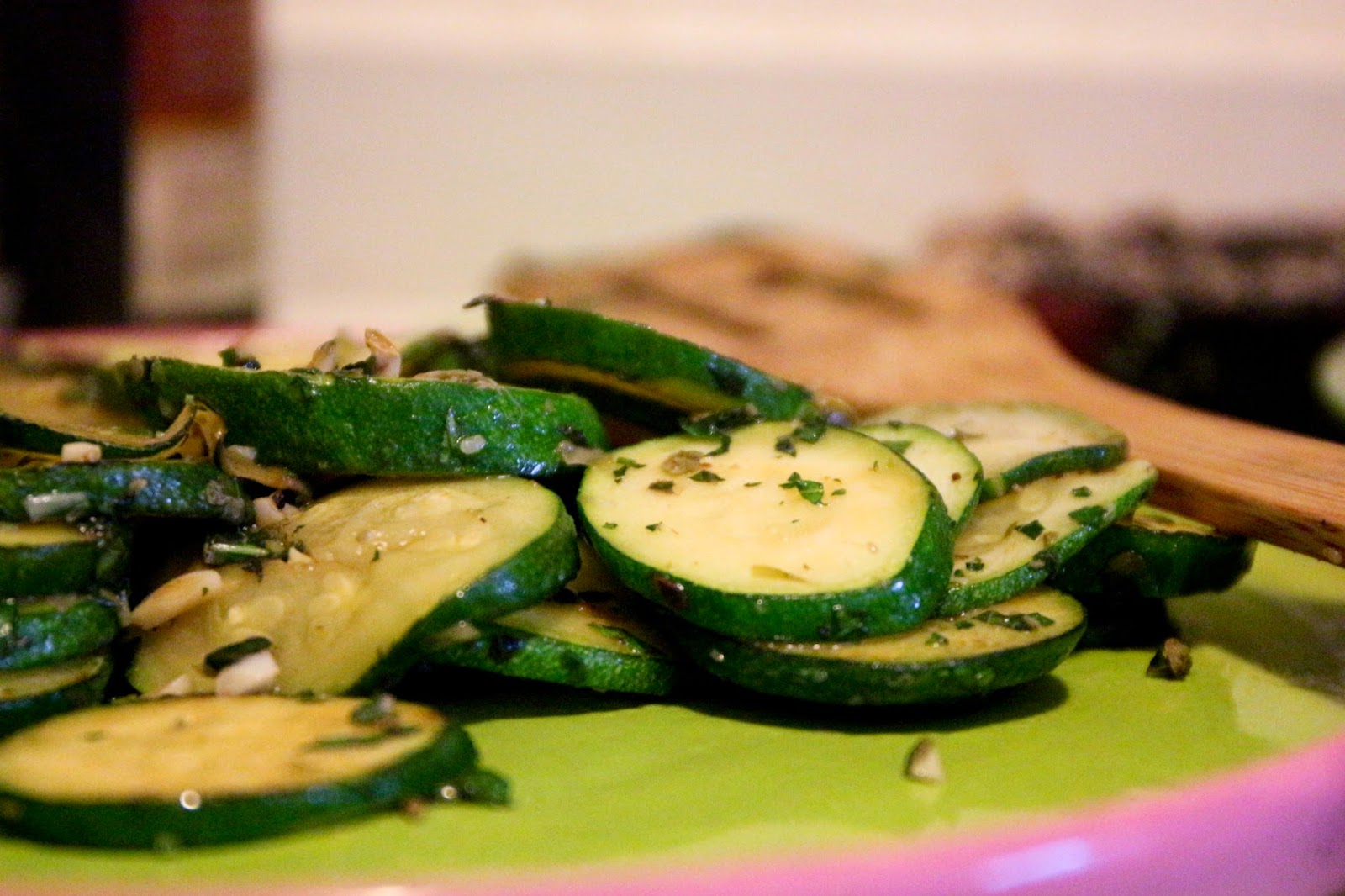I'm officially an Ottolenghi fanatic. I'd been drooling over his cookbooks in stores for a while—now I have one of my very own. Gorgeous full-page pictures ... vibrant, unexpected flavor combinations ... I could gush for a while.
Putting my culinary crush to practical use, I found weekend lunch inspiration from two different recipes in Ottolenghi. First, the Roast Potatoes with Artichokes, Lemon, and Sage: not much more complicated than your average sheet of vegetables browning in the oven. But somehow it's more. Could it be the careful timing? Potatoes, garlic, artichokes, and sage. Then lemons. Then cherub tomatoes and olives. A final sprinkling of parsley.
Or is it the flavor mix? The sweet tomatoes and creamy potatoes matched with a powerful sprinkle of sage and briny olives and artichokes.
All that's certain: I used to despise olives. I've spent the past few months eating them with diminishing winces. But here today, I was doe-eyed.
For another side, I found the flavor combination just a few pages back from the roast potatoes. Cinnamon, thyme, garlic, lemon, and mushrooms. A quick sautée and it was ready. The original recipe called for a variety of mushrooms as well as cinnamon sticks. I opted for just sliced white mushrooms (to save money) and ground cinnamon (because I forgot to double-check my pantry before I went to the store), and it was plenty delicious. I'll go the extra mile next time, and I expect it to be divine.
Salmon seared on a salt block for the final component. As it was my first time with a salt block, I followed these guidelines. On my electric range, I placed the block in a square cake pan (couldn't find my springform) and heated it up to medium-high in increments for about 45–50 minutes. Salt-and-peppered the salmon, rubbed it with olive oil, and cooked it for 6 or 7 minutes on each side, topping it with a Meyer lemon slice once flipped. Success!
Now on to pictures and recipes:

Roast Potatoes and Artichokes with Lemon and Sage (adapted from Ottolenghi)
Serves 4 to 6 as side.
Ingredients:
1 lb. fingerling potatoes, scrubbed
1 lb. marinated artichokes, sliced 1/4-inch thick horizontally
4 cloves garlic, crushed
3 1/2 tbsp. olive oil
2 tbsp. fresh sage, coarsely chopped
1 tsp. salt
1/2 tsp. cracked black pepper
1 lemon, thinly sliced and seeds removed
9 oz. cherub tomatoes
heaping 1 cup kalamata olives, pitted
2 tbsp. coarsely chopped parsley
Method:1. Preheat the oven to 400 F. On the stove, place a large saucepan filled with well-salted water. Add potatoes and bring to a boil. Simmer for 20 minutes. Then drain and let cool slightly.
2. Halve the potatoes lengthwise and place them on a large rimmed baking sheet. Add artichoke slices, olive oil, sage, salt, and pepper. Mix well, then place in oven.
3. After vegetables have been roasting for 30 minutes, add lemon slices and stir mixture with wooden spoon. Return to oven.
4. After another twenty minutes, mix in cherry tomatoes and kalamata olives.
5. Remove from oven. Stir in some of the chopped parsley and use the rest for garnish.
Cinnamon-Thyme Mushrooms (inspired by "Mixed mushrooms with cinnamon and lemon" from Ottolenghi)
Serves 2 to 3 as side.
Ingredients:8 oz. sliced white mushrooms
2 tbsp. olive oil
2 cloves garlic, minced
3 tbsp. fresh thyme
2 tbsp. chopped parsley
2 tsp. ground cinnamon
Juice from one lemon
1. Heat up olive oil in a large sauté pan over medium-high heat. Add garlic, thyme, cinnamon, and parsley and shake pan quickly to prevent sticking. Cook for 2 minutes.
2. Spread sliced mushrooms in a layer over the spices. Cook without stirring for a minute, then stir constantly for 3–4 minutes as mushrooms brown.
3. Serve hot or warm.





















































